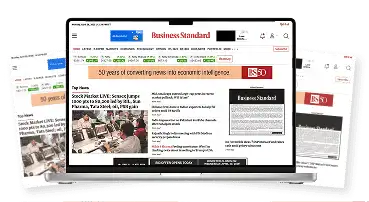The index shows a declining trend, having fallen to its lowest level in seven weeks. The latest available reading for mid-September is at 27.21. This is the lowest since July 26, when it was at 26.66. It has fallen by almost half from a high of 50.3 on August 23.
A carry trade involves borrowing in a country where interest rates are lower and investing it in the assets of another country, which provides higher returns.
| CARRYING TRADE ON DALAL STREET |
What is a carry trade?
|
While the carry trade mostly involving borrowing in dollars helped fuel a large amount of capital flows to Indian equities last year, in the current year, it has had more impact in the Indian debt market, according to experts. They say the risk of carry trade unwinding remains low. G Chokkalingam, executive director and chief investment officer at Centrum Wealth Management, said the US central bank is likely to keep interest rates low to help buoy the economy, suggesting there is no immediate threat to the carry trade.
“The QE (quantitative easing) programme is not expected to taper off this year in light of the fact that the recent US shutdown is expected to have a negative impact of 50 basis points on the country’s GDP. In the short-to-medium term, the carry trade would continue,” he added.
Deven Choksey, managing director at KR Choksey Securities, said US President Barack Obama’s call to raise the debt ceiling is expected to succeed, which would keep the liquidity taps flowing. “Should Obama succeed in his agenda of increasing the debt ceiling, QE is expected to continue,” he said.
In addition to the US, the Japanese and the European central banks also maintain low interest rates. “Last year, the dollar was still the funding currency, which was reflected in the way the market reacted to fluctuations in the value of the dollar. The interest rate in the US is expected to remain low till 2015, which suggests that it would continue to be the funding currency of choice,” said the chief investment officer of an insurance company.
"Last year, the dollar was still the funding currency which was reflected in the way the market reacted to fluctuations in the value of the dollar. The interest rate in the US is expected to remain low till 2015, which suggests that it would continue to be the funding currency of choice," said the person.
Foreign institutional investors were net sellers by Rs.23108.8 crore in equities, according to data from the Securities and Exchange Board of India in the current financial year. They were net buyers by a record Rs.1.4 lakh crore in the previous financial year.
They had been net seller by nearly Rs.50,000 crore, as of September month-end figures.
You’ve reached your limit of 10 free articles this month.
Subscribe now for unlimited access.
Already subscribed? Log in
Subscribe to read the full story →

Smart Quarterly
₹900
3 Months
₹300/Month
Smart Essential
₹2,700
1 Year
₹225/Month
Super Saver
₹3,900
2 Years
₹162/Month
Renews automatically, cancel anytime
Here’s what’s included in our digital subscription plans
Exclusive premium stories online
Over 30 premium stories daily, handpicked by our editors


Complimentary Access to The New York Times
News, Games, Cooking, Audio, Wirecutter & The Athletic
Business Standard Epaper
Digital replica of our daily newspaper — with options to read, save, and share


Curated Newsletters
Insights on markets, finance, politics, tech, and more delivered to your inbox
Market Analysis & Investment Insights
In-depth market analysis & insights with access to The Smart Investor


Archives
Repository of articles and publications dating back to 1997
Ad-free Reading
Uninterrupted reading experience with no advertisements


Seamless Access Across All Devices
Access Business Standard across devices — mobile, tablet, or PC, via web or app



)


